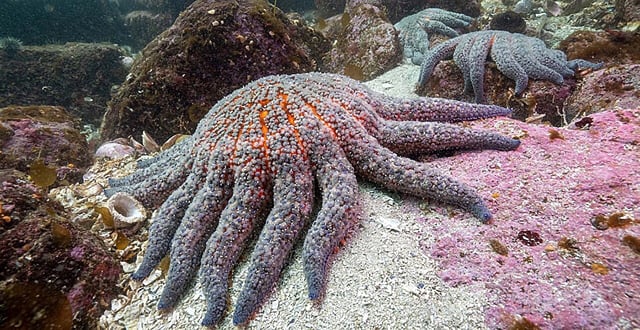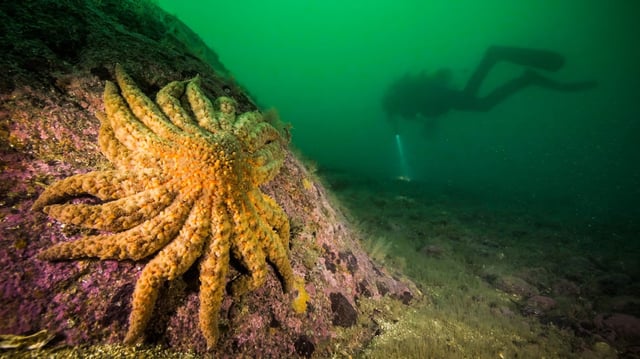Overview
- Researchers shifted from viral theories to isolating Vibrio pectenicida in sea star coelomic fluid, culminating in a Nature Ecology & Evolution study that identifies the bacterium as the definitive pathogen.
- Laboratory inoculations of sunflower sea stars with purified Vibrio pectenicida induced characteristic white lesions and arm detachment, replicating the wasting disease seen in wild populations.
- Prototype field diagnostic kits are being developed to detect Vibrio pectenicida quickly along the Pacific coast, from Alaska to Mexico, to enable earlier outbreak response.
- Collaborations among the Hakai Institute, University of British Columbia, University of Washington and USGS are testing probiotic treatments and selective breeding of resistant sea stars to restore impacted populations.
- Ongoing studies are examining how warmer ocean temperatures accelerate disease transmission and contribute to kelp forest decline through unchecked sea urchin overgrazing.



